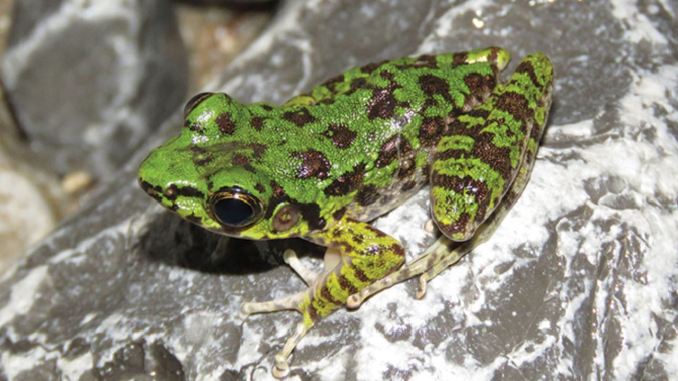A new species of frog, named Odorrana sangzhiensis, has been listed by a group of researchers who discovered it in Sangzhi County, Hunan Province, China. The new species is quite similar to O. schmackeri, but differs from it in several physical characteristics, including average build, absence of dorsolateral folds, diameter of the eardrum, dorsal skin with a few dense granules and a few regularly placed brown spots. , two metacarpal tubercles, different length of the fingers, a tibiotarsal joint beyond the end of the snout, a smooth ventral surface in females and a throat and thorax with pale spinules in adult males, green dorsal limbs or yellow-green with brown transverse bands and finally vocal sacs, placed outside the body, different for their interconnection at the angles of the throat.
With sangzhiensis, the number of frogs of the genus Odorrana is 59, of which 37 have been identified in China. Frogs of the genus Odorrana, first discovered in 1990, are also known as “scent frogs” and are widespread mainly in subtropical and tropical Asia, especially in southern China, Indochina, Japan, Myanmar, Thailand and Malaysia, from Sumatra to Borneo.
The new species, Odorrana sangzhiensis, appears to be widespread in the subtropics and tropics south of the Qinling Mountains in China. The divergence of this lineage was likely caused by paleogeological events or climatic fluctuations, the researchers said. The samples collected by the researchers (two males and three females all adults) were collected by the researchers in certain mountain streams on July 30, 2019.
The researchers extracted DNA from the liver tissue of the frogs to certify the new line. They then also took measurements with a digital caliper to understand the differences, even at the morphological level, described above.
—


